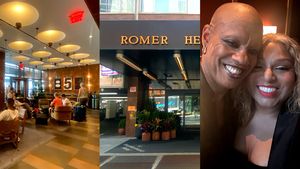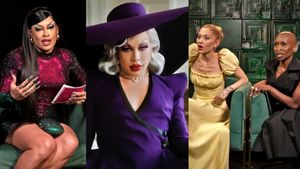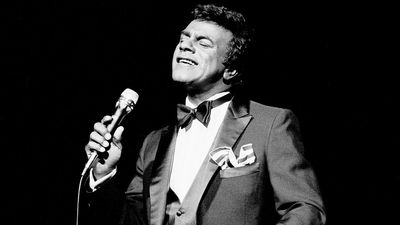
Above: Jean-Leon Gerome, The Snake Charmer, 1870
From tribal tattoos to tiki bars, Western culture has been enthralled with its own interpretation of "exotic" cultures for centuries. For example, in the 17th century Europeans created their own hybrid form of Far Eastern decorative arts, chinoiserie.
 In 1978 the Palestinian-American scholar Edward Said published his influential and controversial book, Orientalism. Said used the term to describe what he argued was a historic Western tradition of prejudiced outsider interpretations of the East as undeveloped and static. In particular, England's imperial steamroller mashed the various cultures of the Middle East into one sensuous and mysterious ideal that depicted the women -- and the men -- as erotic and uninhibited, as well as available.
In 1978 the Palestinian-American scholar Edward Said published his influential and controversial book, Orientalism. Said used the term to describe what he argued was a historic Western tradition of prejudiced outsider interpretations of the East as undeveloped and static. In particular, England's imperial steamroller mashed the various cultures of the Middle East into one sensuous and mysterious ideal that depicted the women -- and the men -- as erotic and uninhibited, as well as available.
 The homoerotic portrayals walked above the safety net. as the sexualized paintings of young men were merely depicting their culture. The English gentleman could observe these naked young dark-skinned men from the promontory of an interested ethnographer.
The homoerotic portrayals walked above the safety net. as the sexualized paintings of young men were merely depicting their culture. The English gentleman could observe these naked young dark-skinned men from the promontory of an interested ethnographer.
Another book, published earlier this year, hit the nail on the head more directly. The Homoerotics of Orientalism (Columbia University Press) by Joseph Allen Boone explains that the cultural exchanges between the Middle East and the West have always been reciprocal and often mutual, and amatory as well as hostile. Boone examines European accounts of Istanbul and Egypt as hotbeds of forbidden desire, juxtaposing Ottoman homoerotic genres and their European imitators. This remarkable study models an ethics of cross-cultural reading that exposes, with nuance and economy, the crucial role played by the homoerotics of Orientalism in shaping the world as we know it today.
 Armand-Philippe-Joseph Bera, Portrait of Dominique Vivant, Baron de Denon in Egypt, 1804
Armand-Philippe-Joseph Bera, Portrait of Dominique Vivant, Baron de Denon in Egypt, 1804
 Constantin-Jean-Marie Prevost, The Tattooing of a Sailor
Constantin-Jean-Marie Prevost, The Tattooing of a Sailor
 The Barber of Suez, Leon Joseph Florentin Bonnat
The Barber of Suez, Leon Joseph Florentin Bonnat
"One of the best examples of an Orientalist painting that appears homoerotic, at least to a modern viewer, is The Barber of Suez, painted by Leon Bonnat in 1876, a few years after his trip to Egypt. ... A comely young man sits cross-legged on a rug, his robe open at his neck, while another well-muscled man, wearing only a loin cloth, stands behind him, leaning over to shave his chin. The sitting man, with a look of plenitude, nestles his head into the barber's crotch. Hugh Honour remarks on the photographic nature of the picture in which 'these two motionless figures [are] completely absorbed into one another, sealed off in their own world, observed but unobserving'. The contact between head and genitals, the tenderness and intimacy of their barber's gesture, as he spreads the fingers of his free hand over the side of his client's face and the blissful look of the man being shaved, combined with the general portrayal of handsome partially unclothed black men, might well have struck responsive chords in the homosexual viewers. -- Robert Aldrich, Colonialism and Homosexuality
 Arabic Dancer, a costume design by Leon Bakst
Arabic Dancer, a costume design by Leon Bakst
 Jean-Leon Gerome, Pelt Merchant of Cairo
Jean-Leon Gerome, Pelt Merchant of Cairo
 Anne-Louis Girodet de Roussy-Trioson, Revolt in Cairo on 21 October 1798 (detail), 1810
Anne-Louis Girodet de Roussy-Trioson, Revolt in Cairo on 21 October 1798 (detail), 1810

 La Dieu Bleu a Pilgrim, Leon Bakst, 1912
La Dieu Bleu a Pilgrim, Leon Bakst, 1912
 Bacanal, Gabriel Morcillo Raya
Bacanal, Gabriel Morcillo Raya
Raya (1887-1973) was a Spanish painter. He began his apprenticeship with his Aunt Paquita Raya and School of Industrial Arts in his hometown. In 1907 he traveled back and forth to to Madrid to study with Cecilio Pla, as his finances allowed. until 1914. During those years he was presented to the National Exhibition of Fine Arts, where he earned an honorable mention in 1912. From 1922 she howed a preference for the Orientalist themes. That same year he was appointed director of the Residence of Painters of the Alhambra. In 1925, he was named an academic of the Royal Academy of Fine Arts in Granada, Madrid, and Malaga. Dedicated to teaching, he taught at the School of Arts and Crafts in Granada. From 1955 to 1960 he traveled to Madrid to paint portraits of Francisco Franco and his wife, and Adm. Carrero Blanco and other members of Madrid's high bourgeoisie.
 Gabriel Morcillo Raya
Gabriel Morcillo Raya
 Gabriel Morcillo Raya
Gabriel Morcillo Raya
 Gabriel Morcillo Raya
Gabriel Morcillo Raya
 Gabriel Morcillo Raya
Gabriel Morcillo Raya
 Gabriel Morcillo Raya
Gabriel Morcillo Raya
 Gabriel Morcillo Raya
Gabriel Morcillo Raya



 In 1978 the Palestinian-American scholar Edward Said published his influential and controversial book, Orientalism. Said used the term to describe what he argued was a historic Western tradition of prejudiced outsider interpretations of the East as undeveloped and static. In particular, England's imperial steamroller mashed the various cultures of the Middle East into one sensuous and mysterious ideal that depicted the women -- and the men -- as erotic and uninhibited, as well as available.
In 1978 the Palestinian-American scholar Edward Said published his influential and controversial book, Orientalism. Said used the term to describe what he argued was a historic Western tradition of prejudiced outsider interpretations of the East as undeveloped and static. In particular, England's imperial steamroller mashed the various cultures of the Middle East into one sensuous and mysterious ideal that depicted the women -- and the men -- as erotic and uninhibited, as well as available. The homoerotic portrayals walked above the safety net. as the sexualized paintings of young men were merely depicting their culture. The English gentleman could observe these naked young dark-skinned men from the promontory of an interested ethnographer.
The homoerotic portrayals walked above the safety net. as the sexualized paintings of young men were merely depicting their culture. The English gentleman could observe these naked young dark-skinned men from the promontory of an interested ethnographer.














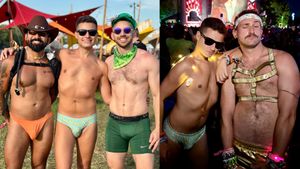











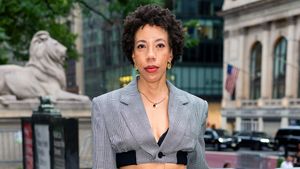

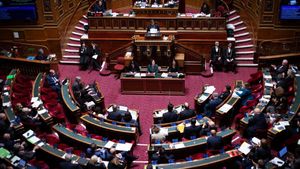
 Armand-Philippe-Joseph Bera, Portrait of Dominique Vivant, Baron de Denon in Egypt, 1804
Armand-Philippe-Joseph Bera, Portrait of Dominique Vivant, Baron de Denon in Egypt, 1804 Constantin-Jean-Marie Prevost, The Tattooing of a Sailor
Constantin-Jean-Marie Prevost, The Tattooing of a Sailor The Barber of Suez, Leon Joseph Florentin Bonnat
The Barber of Suez, Leon Joseph Florentin Bonnat  Arabic Dancer, a costume design by Leon Bakst
Arabic Dancer, a costume design by Leon Bakst Jean-Leon Gerome, Pelt Merchant of Cairo
Jean-Leon Gerome, Pelt Merchant of Cairo Anne-Louis Girodet de Roussy-Trioson, Revolt in Cairo on 21 October 1798 (detail), 1810
Anne-Louis Girodet de Roussy-Trioson, Revolt in Cairo on 21 October 1798 (detail), 1810
 La Dieu Bleu a Pilgrim, Leon Bakst, 1912
La Dieu Bleu a Pilgrim, Leon Bakst, 1912 Bacanal, Gabriel Morcillo Raya
Bacanal, Gabriel Morcillo Raya Gabriel Morcillo Raya
Gabriel Morcillo Raya Gabriel Morcillo Raya
Gabriel Morcillo Raya Gabriel Morcillo Raya
Gabriel Morcillo Raya Gabriel Morcillo Raya
Gabriel Morcillo Raya Gabriel Morcillo Raya
Gabriel Morcillo Raya Gabriel Morcillo Raya
Gabriel Morcillo Raya








